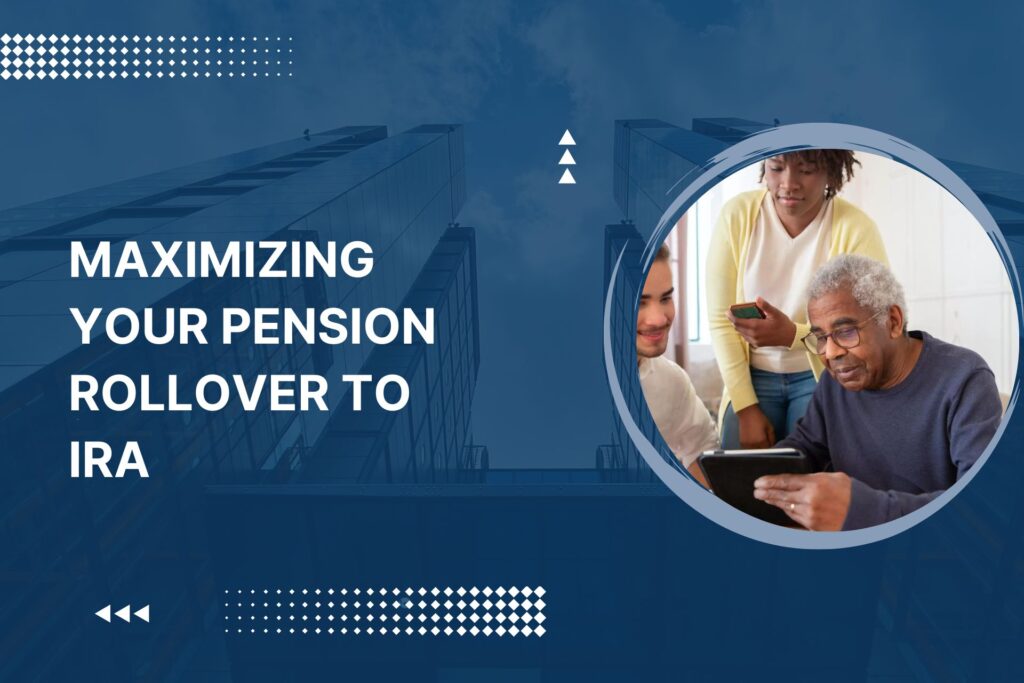In today’s dynamic financial landscape, securing a stable retirement future necessitates strategic planning and informed decision-making. Among the pivotal choices individuals face is the decision to rollover their pension into an Individual Retirement Account (IRA). While this transition opens doors to a multitude of opportunities, it also comes with its fair share of limitations and complexities. In this comprehensive guide, we delve into the intricacies of pension rollover to IRA, shedding light on the limits governing the process and uncovering the vast array of opportunities available to savvy investors.
Understanding Pension Rollover to IRA
What is a Pension Rollover?
At its core, a pension rollover refers to the transfer of funds from an employer-sponsored pension plan to an Individual Retirement Account (IRA). This strategic move is often prompted by life transitions such as retirement or changing jobs, empowering individuals to take greater control over their retirement savings and investment decisions.
Types of Pension Rollovers
Pension rollovers come in two primary forms: direct and indirect. A direct rollover involves the seamless transfer of funds from the pension plan directly into the IRA, minimizing tax implications and administrative hassle. Conversely, an indirect rollover occurs when an individual receives the distribution from their pension plan and subsequently deposits it into an IRA within the stipulated time frame, typically 60 days.
Pension Rollover Limits
Contribution Limits
Understanding the contribution limits imposed by the Internal Revenue Service (IRS) is paramount for individuals contemplating a pension rollover to IRA. As of the tax year 2024, the annual contribution limit for IRAs stands at $6,000 for individuals under the age of 50. For those aged 50 and above, a catch-up contribution of $1,000 is permitted, allowing for a total contribution of $7,000.
Income Limits
While traditional IRAs do not impose income limits for rollovers, Roth IRAs have income thresholds that determine eligibility for contributions. For single filers, the phase-out range for Roth IRA contributions in 2024 spans from $129,000 to $144,000. For married couples filing jointly, the phase-out range extends from $204,000 to $214,000.
Rollover Restrictions
While there are no specific limits on the amount that can be rolled over from a pension plan to an IRA, certain restrictions and considerations come into play. Notably, if an individual receives a lump-sum distribution from their pension plan, 20% of the distribution is withheld for federal taxes unless it is directly rolled over into an IRA within the designated time frame of 60 days.
Want to Know More about Pension Rollover?
Click here to Schedule a Free Consultation Today!Maximizing Opportunities
Tax Advantages
One of the most significant advantages of a pension rollover to IRA is the potential tax benefits it offers. By rolling over funds into a traditional IRA, individuals can defer taxes on their retirement savings until withdrawals are made during retirement. Alternatively, opting for a Roth IRA allows for tax-free withdrawals under specific conditions, providing added flexibility and tax efficiency in retirement planning.
Investment Flexibility
IRAs present investors with a wide array of investment options, far surpassing the limitations often associated with employer-sponsored pension plans. From stocks and bonds to mutual funds and real estate investment trusts (REITs), IRA holders have unparalleled flexibility in crafting an investment portfolio tailored to their risk tolerance, financial goals, and time horizon.
Estate Planning Benefits
Beyond the immediate tax advantages and investment opportunities, pension rollovers to IRAs offer substantial benefits in terms of estate planning and wealth transfer. By designating beneficiaries for their IRA accounts, individuals can ensure a seamless transfer of assets to their heirs, bypassing the probate process and potentially minimizing estate taxes. This level of control and flexibility enhances the legacy-building aspect of retirement planning, allowing individuals to leave a lasting financial legacy for future generations.
Conclusion
In conclusion, navigating the terrain of pension rollover to IRA demands a thorough understanding of the limits and a keen eye for seizing opportunities. By adhering to contribution and income thresholds, while leveraging the tax advantages and investment flexibility offered by IRAs, individuals can optimize their retirement savings and pave the way for a financially secure future. Armed with knowledge and strategic foresight, investors can embark on this pivotal journey towards retirement with confidence and clarity.


